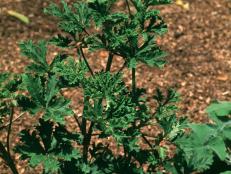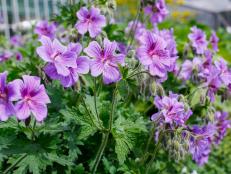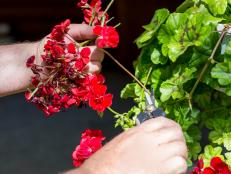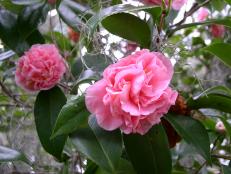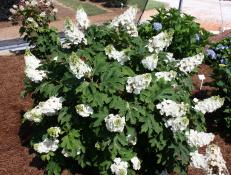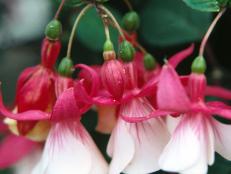Ivy Geranium
Count on ivy geraniums with their trailing stems and pretty blooms to lift garden color to new heights.

Try your hand at growing ivy geraniums. These are trailing geraniums that tumble happily out of hanging baskets or containers to form cascades of flowers and foliage. Ivy geranium (Pelargonium peltatum) unfurls leaves that resemble ivy. The leaves are quite eye-catching and have a bright green hue.
Ivy geraniums can grow up to three feet wide—or trail that far out of pots. The one drawback is that stems tend to be brittle and break easily, so it’s often unusual to get through an entire growing season without losing a stem piece or two. Protect against stem breakage by placing ivy geraniums, especially those in containers or hanging baskets, in areas where they aren’t exposed to strong winds, active children or playful pets.
Zonal geraniums—the flower that comes to mind when you hear the word “geranium”—have spherical flower heads. Ivy geraniums open blossoms in clusters, too, but it’s a looser form than the ball-type blooms on their zonal geranium cousins. Ivy geraniums typically have blooms in the red-purple family, including shades of red, pink, white, burgundy, lavender and deep purple-black. Petals may display whiskers in a contrasting hue or have a ruffled appearance.
Ivy geranium plants flower continuously all season long. Traditionally, ivy geraniums bloom strongest when nights are cool, in the 50- to 60-degree range. Newer hybrids, however, have been developed to bloom during heat-filled summer nights. If flower formation stalls during hot weather, the return of cooler air should trigger buds.
Faithfully removing faded blossoms encourages ivy geraniums to keep forming flower buds. It also helps to feed plants with a bloom booster fertilizer. Use a liquid soluble type for containers and hanging baskets, applying it every 10 to 14 days.
Place ivy geraniums where they’ll receive full sun most of the day. In hottest regions, it’s a good idea to protect plants from strong afternoon sun.
In containers, use a commercial bagged soil-less mix developed for use in containers. In planting beds, add organic matter to soil. Make sure that soil is moist but also well-drained. Water plants whenever the top inch or two of soil is dry. Try to water in the morning, if possible, because water on geranium leaves overnight opens the door to disease.
Two problems frequently plague ivy geranium leaves. First, young leaves sometimes emerge white or bleached when high temperatures occur. The problem disappears when cool air returns. Second, edema is a common leaf issue on ivy geraniums. With edema, leaves develop brown tinted water blisters. It occurs because roots are taking up more water than plants can use or release through leaves. Allow soil to dry out and reduce watering.







